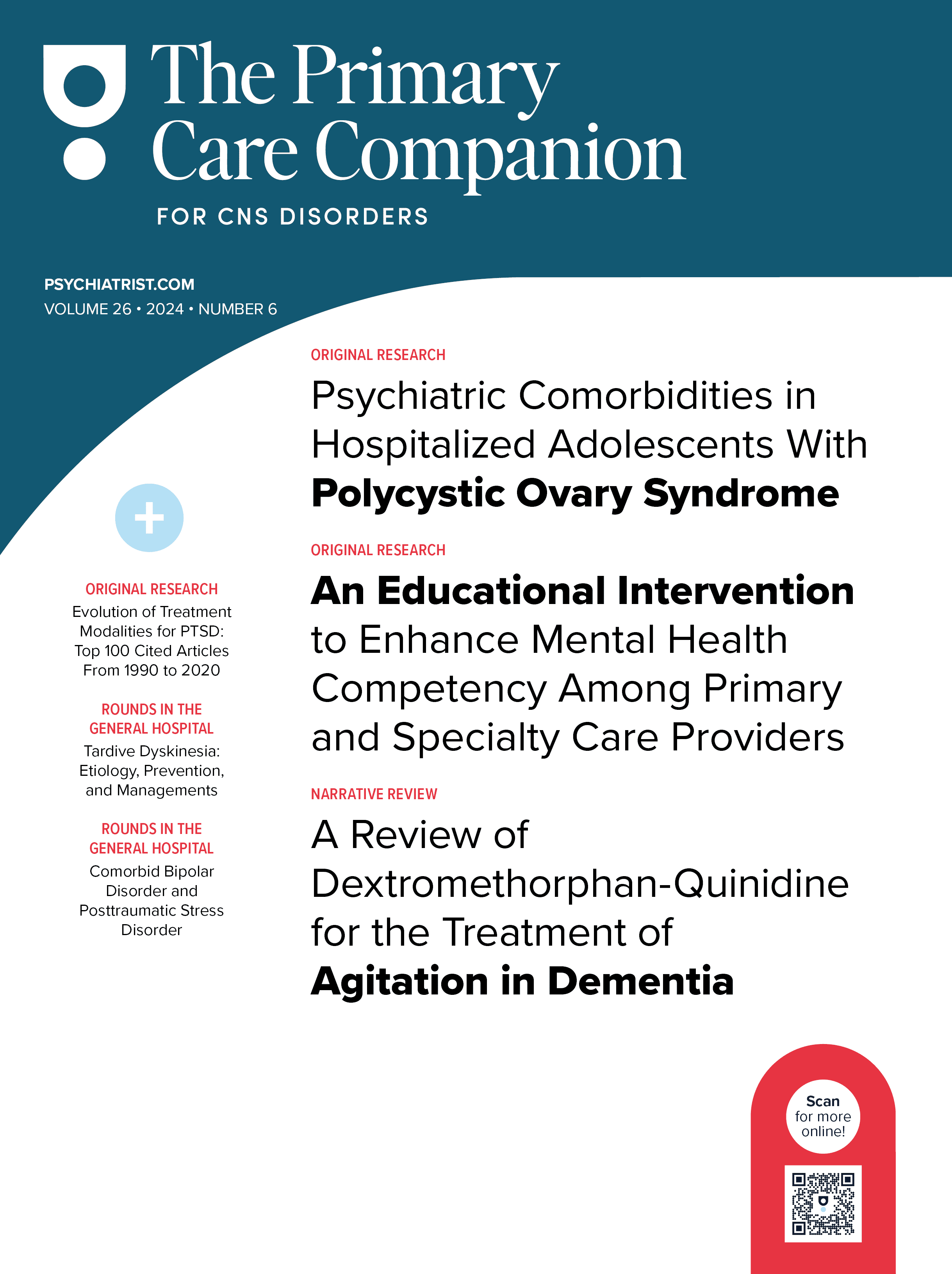Bipolar disorder is frequently encountered in primary care settings, often in the form of poor response to treatment for depression. Although lifetime prevalence of bipolar I disorder is 1%, the prevalence of bipolar spectrum disorders (e.g., bipolar I, bipolar II, and cyclothymia) is much higher, especially among patients with depression. The consequences of misdiagnosis can be devastating. One way to improve recognition of bipolar spectrum disorders is to screen for them. The Mood Disorder Questionnaire is a brief, self-report screening instrument that can be used to identify patients most likely to have bipolar disorder. Once identified, and subsequently appropriately diagnosed, the lives of those with bipolar disorder may be considerably improved.
This PDF is free for all visitors!
Save
Cite

